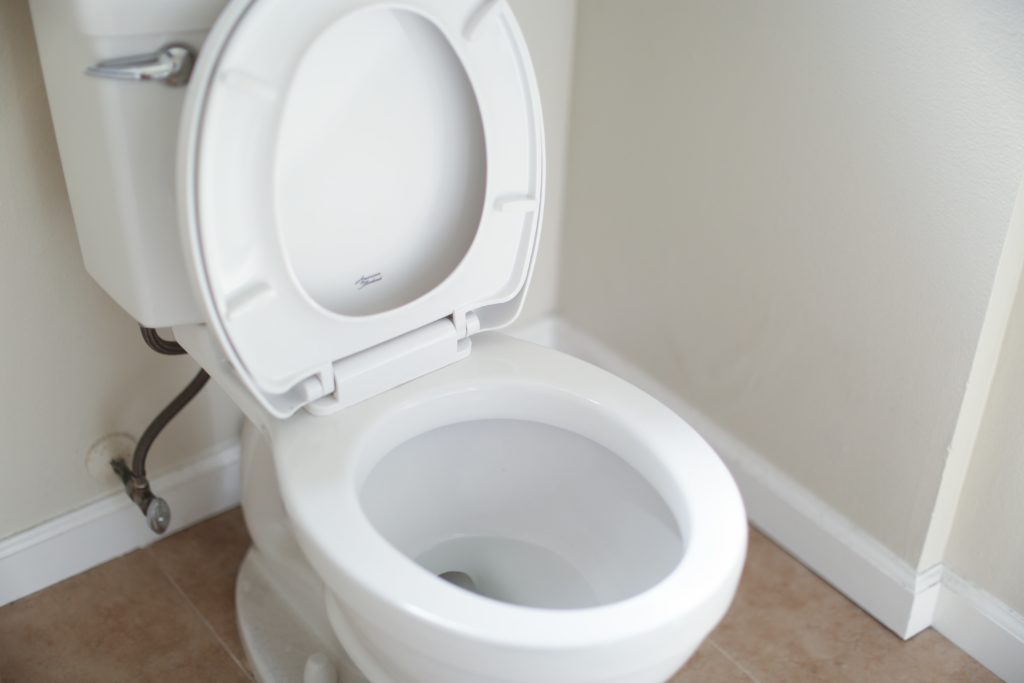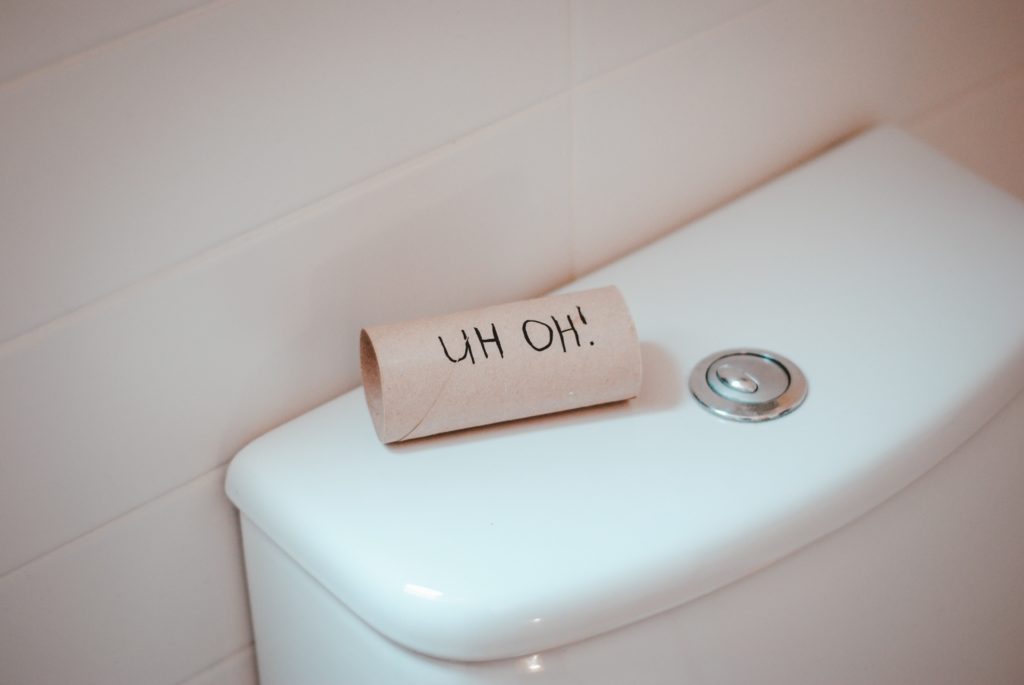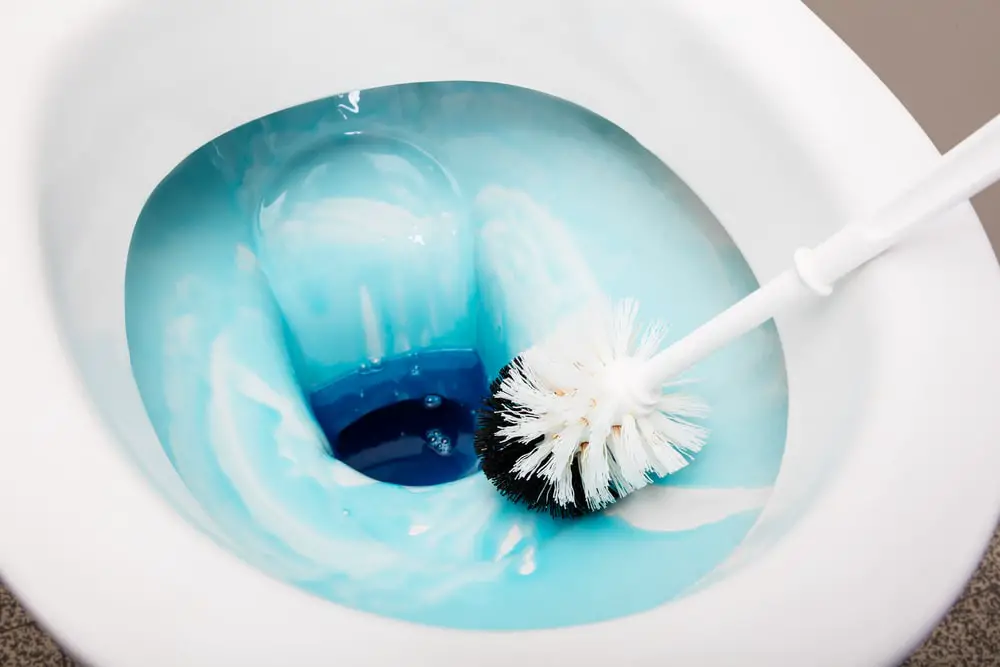Regardless of how clean it may look, the average toilet bowl contains 3.2 million bacteria per square inch and that’s not including the flush handle or toilet seat!
Although toilet bowls have the title of dirtiest household item, you may be surprised to know the water in your toilet is the same that would come from your taps or showers.
Whilst we don’t suggest you go and drink your toilet water, here is some interesting information regarding the best ways to go about cleaning your toilet, if toilet water can make you sick and what types of bacteria can be found in and around your toilet bowl.
Contents
Is Toilet Water Clean?
The toilet is often the most used utility in any household, but also the most overlooked when it comes to cleaning. Even with weekly cleaning, you can find bacteria such as E Coli present which is surprising when you remember that toilet water is just regular drinking water.
Even though this water is the very same that is being used for your daily shower and to clean your dishes, that doesn’t make it safe enough to be consuming it.
Although thousands of people every day accidentally make contact with this water due to a variety of scenarios such as on the seat to the dreaded dropped keys/ phone into the bowl. Generally, it shouldn’t be a cause for concern as it can be washed from your skin.
However, it is important you know that no matter how clean the water is, the germs present on the toilet (especially in public toilets!) will be passed into the clean water as it flushes into the bowl.

What Germs Are In Toilet Water?
Most people are aware of the importance of keeping your toilet clean and regularly use products designed to kill and remove bacteria build-up, but when it comes to public toilets you have no way of knowing how many total strangers have sat on that same seat before you, or even when it last got cleaned.
According to WebMD, there are several dangerous things you can pick up during a trip to the bathroom such as
- Hepatitis A
- Shigella
- E. Coli
- Staph
- Colds
Luckily, there are simple ways you can prevent transmitting these organisms and give you peace of mind that not all bathroom trips need to be a cause of concern.
Washing your hands properly will kill most germs you could pick up from the bathroom and as long as you’re careful it is totally safe to use a public toilet, even with the risk of these germs being present.
Can Touching Toilet Water Make You Sick?
Whether you’ve been sprayed in the face or had to retrieve a toy your child dropped down the bowl, touching toilet water is enough to make anyone’s skin crawl.
You may find yourself panicking that you are going to become sick after contact with toilet water via your skin, especially knowing that your skin can absorb small amounts of moisture. But luckily for you, this is very unlikely to happen from a split second of toilet water splashing onto your skin.
As long as you wash the area properly with anti-bacterial soap afterward you will only be left with a gross memory and no sickness.
However, if the toilet water came into contact with thin-skinned areas such as a cut/ wound or even splashed into your eyes, mouth, or nose then you may want to act fast. These areas act as entry points for germs as there aren’t enough layers of skin to prevent the bacteria from being absorbed.
You can prevent this from happening by washing the area thoroughly and using an eye/ mouth or nose rinse where appropriate to flush out any remnants of your toilet trouble.

What Is The Best Way To Clean A Toilet?
With so many germs to worry about from E.Coli to Strep, you may find yourself with a sudden urge to make sure your toilet bowl, lid, flush, and seat are disinfected and cleaner than ever before.
But there are many arguments that common methods to clean your toilet such as the traditional toilet brush may be harboring additional germs and creating a bigger mess than you had in the first place!
Here are some top-secret ways in which you can improve your toilet cleaning regime and have fewer germs floating about in your bathroom.
Silicone Toilet Brushes
This may seem crazy, but silicone toilet brushes are a revolutionary step forward in getting the best clean possible on your toilet. The Assistant Professor of Microbiology at the University of Temmessee-Knoxville has said that in comparison to plastic, silicone attracts fewer microorganisms and also dries much faster than plastic, making it less likely to accumulate microbes.
As well as also being much easier to clean, this means silicone toilet brushes are an overall much more sanitary and hygienic option when it comes to scrubbing your toilet clean.
Clean Your Water Tank
When most people clean their toilet, this doesn’t include the water tank and many don’t realize that this can play a big part in the cleanliness of their toilet. Many water tanks suffer from mineral buildup which can make cleaning your toilet feel like a never-ending task.
All you need to do is pour in 4 cups of cleaning vinegar and leave it to soak for an hour or two. Then flush your toilet with the water turned off and this will drain your tank so it’s easier to scrub clean.
Once you’re done, turn the water back on and let the tank fill back up. You may want to flush a few times to rinse the tank fully and ensure it’s totally clean.
Bleach and Disinfectant

Finally, the best way to kill any germs in, around, and outside of your toilet bowl doesn’t need to be a difficult task.
Use any bleach inside the bowl and leave it to sit to remove any traces of germs and use either disinfecting wipes or spray on a sponge and disinfect the exterior of your bowl, all sides of the seat, and even up the back of the tank. Germs spread faster than you realize, so for a good clean, you’re better safe than sorry.
FAQs
Can You Get a Disease From Toilet Water?
Many people are surprised to discover that public toilets are a breeding ground for many viruses such as E.Coli, Hepatitis A, and Strep. Good hygiene practices can help to prevent these from lingering on your hands
Is Bathroom Water Safe To Drink?
Your bathroom tap water is perfectly safe to use for brushing your teeth, however, we suggest using your kitchen tap for drinking water as this eliminates the possibility of coming into contact with germs you’d find in your bathroom.
Why Did My Toilet Water Turn Brown?
The most common cause of discolored toilet water is rust. Older pipes, hard water mineral build-up, or a damaged well system can also be to blame.
Why Are Toilet Cleaners Blue?
Blue toilet cleaning tablets dye the water so you can tell when it is present in the system and when you may need to refill or use another one to have long-lasting protection and freshness in your bathroom.
Summary
In summary, although it’s surprising to know your toilet water is the very same that comes from your other appliances, this doesn’t mean it is safe.
The presence of germs in your toilet will be washed into the water as you flush the toilet and agitate the bowl which can lead to serious illness if you come into contact without proper hygiene practice.




